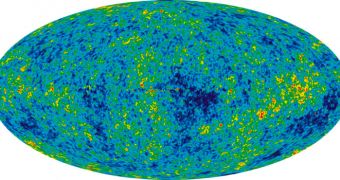University of Michigan (U-M) physics professor Michael Longo and his research team have recently determined that the early Universe may have not displayed mirror symmetry. For a long time, experts have believed that the Cosmos was symmetric from any point of view.
Astrophysicists compare this to a basketball – it appears to be symmetrical in any direction you look. However, the latest studies seem to show that this is not the case in reality, indicating that the Big Bang was not symmetrical itself.
The data Longo and his team managed to put together paints a picture in which the event that exploded everything into being lead to the appearance of a shape that was much more complex than experts had originally thought. This could very well mean that the early Universe spun on an axis.
For the new experiments, the team analyzed datasets provided by the Sloan Digital Sky Survey (SDSS). The study covers more than one million galaxies, providing astronomers with a means of classifying and inventorying them.
The U-M experts looked at tens of thousands of spiral galaxies that the SDSS had covered, and determined that all of them tended to exhibit a preferred direction of rotation, Daily Galaxy reports.
Symmetry breakdowns, known among scientists as parity violations, occur in a galactic sense when more mirror images of counter-clockwise rotating galaxies have clockwise rotations. In order to avoid such violations, all galaxies must rotate in random directions.
However, the SDSSS revealed that spiral galaxies tend to prefer a left-handed, or counter-clockwise rotation. This effect was found extending for more than 600 million light-years, towards the north pole of the Milky Way.
“The excess is small, about 7 percent, but the chance that it could be a cosmic accident is something like one in a million,” Longo explains, saying that the work provides a newer insight into the shape of the Big Bang.
“These results are extremely important because they appear to contradict the almost universally accepted notion that on sufficiently large scales the universe is isotropic, with no special direction,” the team leader goes on to say.
The work also has implications on the nature of the Universe. If the Cosmos is to be considered symmetric and isotropic, then the Big Bang must be demonstrated to have occurred symmetrically.
The new data indicates that the Universe was born rotating, which means that it has a preferred axis. These movements would have been transferred to the earliest galaxies, which explains why they now exhibit this rotational preference.
Experts are now conducting a large-scale survey of the southern sky as well, in order to determine whether galaxies prefer counter-clockwise rotation in that hemisphere as well.

 14 DAY TRIAL //
14 DAY TRIAL //